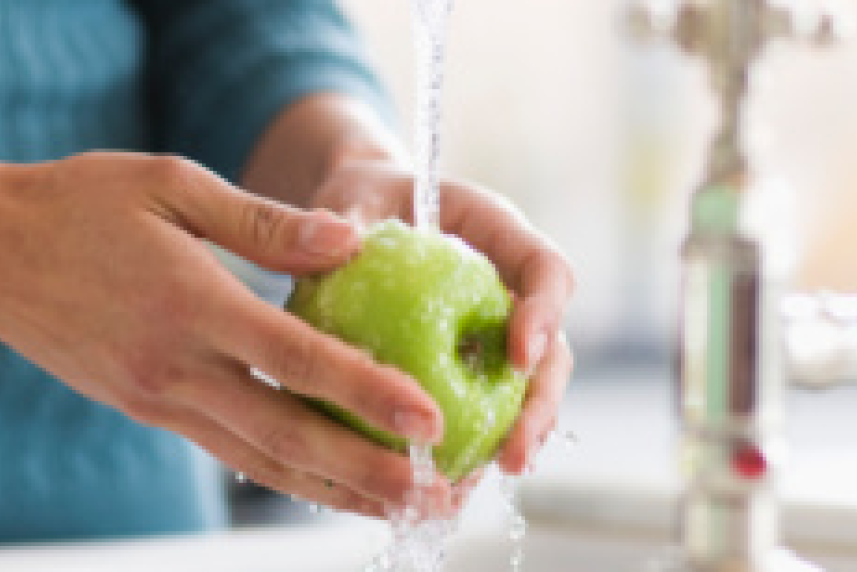What’s the right way to wash produce?
Take the confusion out of cleaning fruits and veggies

Each year, about 48 million Americans get sick from contaminated foods, and dirty produce is a big culprit. But don’t let that stop you from getting your fill of nutritious fruits and veggies. There’s an easy fix: Wash your produce before use. Follow these simple tips.
Why do I need to wash produce?
Whether you buy your produce at the grocery store or farmer’s market, the Food and Drug Administration recommends washing it before use to help get rid of bacteria or pesticide residue. Fruits and vegetables may come into contact with bacteria where they grow, after they are harvested, during transport, or even at home as you are preparing them. Foods grown conventionally rather than organically may have residue from pesticides (read more below).
How do I do it?
First, wash your hands with warm, soapy water. Use cold tap water to wash fruits and veggies, but don’t use soap. You can also rinse foods in a white vinegar solution by mixing 1/2 cup of white vinegar in a large bowl of cold water. Use these tips for specific foods:
- Broccoli, greens, potatoes, and foods with uneven surfaces: Soak in a bowl of cold water for 1 to 2 minutes. Rinse well.
- Cucumbers, melons, and foods with thick skins: Scrub lightly with a produce brush. Rinse.
- Berries and foods with thin skins: Place berries in a colander. Strawberries can be rinsed in a colander under tap water, but other berries are best rinsed by placing a colander in a bowl of cold water.
- Mushrooms: Wipe with a damp paper towel. Mushrooms will absorb water if soaked.
After washing, drying can help remove additional bacteria or pesticide residue, and can keep produce from getting mushy. Pat dry with a clean paper towel. For greens or berries, use a salad spinner.
Should I worry about pesticides?
The health benefits of a diet rich in fruits and vegetables outweigh the risk of pesticides. But if you’re concerned, you may want to consider buying organic options for foods that are often high in pesticides. The Environmental Working Group puts out a “Dirty Dozen” list of these foods each year. The good news is that there are plenty of delicious, healthy options that are often low in pesticides, known as the “Clean 15.” Whether you buy organic or conventional, be sure to wash your produce.


